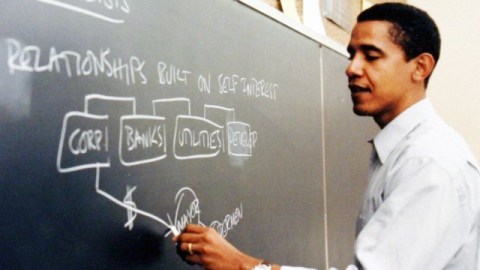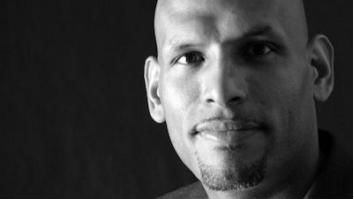Investing in Civic Education about Climate Change: What Should Be the Goals?

On Thursday, the National Academies will be holding the second in a series of roundtable events on climate change education. Registration is open to the public.
In a white paper commissioned as background for the organizing committee, I argue that climate change education needs to promote a range of outcomes beyond just technical understanding of climate science.
I highlight the cognitive i.e. promoting different forms of knowledge; the affective i.e. promoting efficacy and trust; and the skills-based i.e. skills that help citizens learn, connect, collaborate, participate, and plan.
From the draft white paper, I’ve pasted a detailed overview of these three areas.
The Cognitive: Forms of Knowledge
The first set of outcomes involve dimensions of knowledge that include but also expand upon the focus of public education initiatives to date:
The first area of knowledge—and the most commonly emphasized—is climate science literacy.This focus derives in part from the work of Jon Miller (1998), who has defined science literacy generally as awareness and knowledge of technical terms and constructs sufficient to make sense of competing arguments encountered in news coverage, policy debates, and public discussions. Applied to climate change, survey assessments of climate literacy have included understanding the natural and man-made causes of climate change as well as current and future climate change-related impacts and risks (Nisbet & Myers, 2007).
The recent Yale University report “Americans Knowledge of Climate Change” is the most comprehensive conceptualization and measurement of climate science literacy to date. This report evaluates climate science literacy relative to (a) basic awareness of terms such as greenhouse effect and belief that climate change is happening; (b) understanding of natural and man-made causes of climate change; types of greenhouse gases and types of fossil fuels; (c) understanding of the differences between weather and climate; changes in temperature over time; and the rise in CO2 levels; (d) understanding of regional variation in temperature, precipitation, and agricultural impacts; causes of sea level rise; and of other impacts such as ocean acidification and coral bleaching (Leiserowitz, 2010).
A second important dimension of knowledge focuses on understanding how climate science works as an institution and as a changing body of knowledge. Understanding in this area includes how scientists conduct their work and resolve disagreements; the role of scientists and their organizations in societal decision-making including how scientific advice is used in Congress or the co-production of IPCC reports between scientists and policymakers; the political and social biases of scientists; in the current political climate, the connections between scientists, environmental groups, the Democratic party and other frequent allies in communicating about climate change; and finally, public perceptions of scientific agreement. To date, survey assessments have focused on public perceptions of agreement among experts, but few if any of the other features of knowledge in this domain have been investigated.
A third area of knowledge involves understanding the political and policy dimensions of climate change. This includes understanding of recent legislation or international agreements; the position of political parties, interest groups, and leaders on these proposals; the range of policy solutions proposed or available at the international, national, or local level, and their relative trade-offs. As the recent Yale report does, this can also include understanding of the sources of greenhouse gas pollution such as coal powered plants or cars that can be addressed in mitigation-related policies. It would also include understanding the difference between mitigation and adaptation actions.
A fourth area of knowledge involves participatory knowledge, which includes information and details on how a citizen can get involved and have a say in decisions that are made about climate change at the community or national level. Knowledge in this area makes it easier for community members to voice their preferences, draw attention to perceived problems, and to express their ideas on possible solutions. Emphasizing this dimension of knowledge also helps promotes a two-way exchange of information between experts and the public.
Consider that a past George Mason / Yale University survey on climate change found that more than 90% of Americans had never written, emailed, or phoned a government official about climate change. When respondents were asked about the reasons that prevented them from participating more frequently, 17% simply said they “didn’t know how” while another 16% said it “took too much effort.” (Leiserowitz et al., 2009a).
A fifth area involves conceptual and integrated understanding that might connect these knowledge areas. As an example, the recent Yale report asks respondents to identify figures that represent their conceptualization of how the climate system works, ranging from a threshold conceptualization to a fragile, random, or gradual view (Leiserowitz, 2010).
Another example is the mental model that Americans have about the best way to solve climate change-related energy problems. Mental models involve using heuristics and frameworks, usually based on everyday experience, conventional wisdom, or popular culture to make sense of a complex scientific topic or policy problem. Public understanding often depends on shifting the mental models that individuals use to make sense of an issue.
On energy, one mental model focuses attention on a “supply problem” with the solution either the discovery of new sources of petroleum through off-shore drilling, and/or greater reliance on renewable resources such as wind, hydro-electric, solar, and nuclear. However, this “supply problem” mental model distracts public attention and action away from what experts, including the National Academies , describe as potentially more effective and feasible actions that reduce consumer and industrial demand for energy and in the process reduce greenhouse gas emissions. Examples include fuel standards for cars; and improvements in refrigeration, lighting, household, and industrial efficiency. One possible education goal, therefore, should be to shift the dominant mental model and focus in a community from “supply” to “demand” solutions. Polls show that the applicable mental model that the public applies to the energy challenge can tip based on swings in gas prices and media attention.
A sixth area involves practical or consumer literacy that can be applied to solving common everyday personal problems such as decisions about energy use or interpreting the packaging on energy appliances.
For example, in a national survey, when asked about the important energy reduction actions of insulating their attic or weather proofing their home, more than 20% of Americans said that a barrier was that they “didn’t know how” and nearly a quarter indicated they didn’t have the time to research the options. In addition, many Americans may erroneously assume they have already adopted the best and most effective energy efficiency practices in terms of heating and insulation and may not be aware of newly available options (Leiserowitz et al, 2009b).
Consider also that many Americans express that they would like information on what personal actions they can take that would have the “most bang for the buck,” in other words the actions that are likely to make the most difference in terms of conservation or cost-savings. As expert agreement emerges on these questions, there should be increased communication around these practical, consumer dimensions.
A seventh dimension of knowledge involves ethical, moral, and religious understanding. What are the moral frameworks available and applicable to weighing and assessing the risks, trade-offs and complex questions surrounding climate change? How does climate change fit as an issue within the context of specific religious teachings or secular traditions such as environmentalism or humanism?
A final “meta-dimension” involves localized knowledge and understanding. How do each of the above categories apply to the scientific, social, and political dynamics of climate change that are specific to an individual’s local area or community? For example in terms of the application of mental or conceptual models, a resident living in a Midwest city may draw upon their own personal experience observing agriculture-related energy use or on the potential of biofuels. In contrast, a resident of a Northeast city may reference their experience with commuting, urban sprawl, air pollution, and/or public transportation. Information provided in a region or city should therefore be tailored to these unique connections and needs.
The Affective: Trust and Efficacy
Research on civic engagement and political participation generally, finds that the influence of knowledge is mediated by feelings of trust and efficacy. Individuals who are more knowledgeable about public affairs tend to also be more trusting of government; more trusting of their neighbors and community members; and more efficacious, believing that their participation or collaboration with others can make a difference and those government officials will respond to their activity and preferences.
Apart from socio-demographic variables such as education and income, it is these feelings of trust and efficacy that have the strongest impact on the likelihood of an individual to become involved in their communities or to participate politically. Knowledge is one factor shaping trust and efficacy, but there are other important contributors to these feelings (McLeod, Scheufele, & Moy, 1999; Scheufele, Nisbet, Brossard & Nisbet; 2004).
Survey research specific to climate change has tracked public trust in different societal actors—including scientists—as sources of information about climate change. But little work has been done on the factors that shape trust in scientists and other actors, and the role that trust plays in direct public involvement. Similarly, feelings of efficacy and their relationship to civic involvement on climate change also remain unexplored.
Climate change education initiatives can and should contribute meaningfully to feelings of trust and efficacy. As discussed later, this can take place through the organization of localized deliberative forums, but also through media presentations that portray individuals with whom a targeted audience identifies as effectively participating in their communities and nationally on the issue, in collaboration with a diversity of others, and in successful collaboration with government officials and institutions.
Civic Skills and Media Literacy
If Americans are going to act on their knowledge of climate change, what skills do they need to effectively participate and collaborate with others? Civic education on climate needs to not only promote different forms of learning and affective outcomes, but also impart information and resources on how to host a meeting; recruit volunteers; speak at public forums; or find sources of financial support for local and regional efforts at mitigation and adaptation.
While these civic skills might be of use to a smaller sub-set of Americans, media literacy skills are important for almost any individual. To motivate and prepare Americans to use digital media to learn about climate change, share information, express their views, and coordinate activities, science organizations should partner with universities, social scientists, and journalists to develop “civic science media literacy” curricula. These modules can be formally incorporated into university, junior college, and high school science courses across the country or offered as part of continuing education at public libraries.
The modules would introduce students to quality online news sources about climate change; teach students about how to constructively use participatory tools such as blogs and other social media applications; educate students on how to critically evaluate evidence and claims as presented in the media; introduce students to the relationships between science and institutions as they are often covered in the news; and socialize students into enjoying and following the issue of climate change by way of digital media after they complete course or training. In short, this type of media literacy curriculum would not only potentially grow the audience for information about climate change but also impart the skills, motivation, and know-how that students need to be participatory citizens in the online and real world (Nisbet & Scheufele, 20009).
What do readers think? Are there dimensions or outcomes missing from this list?





